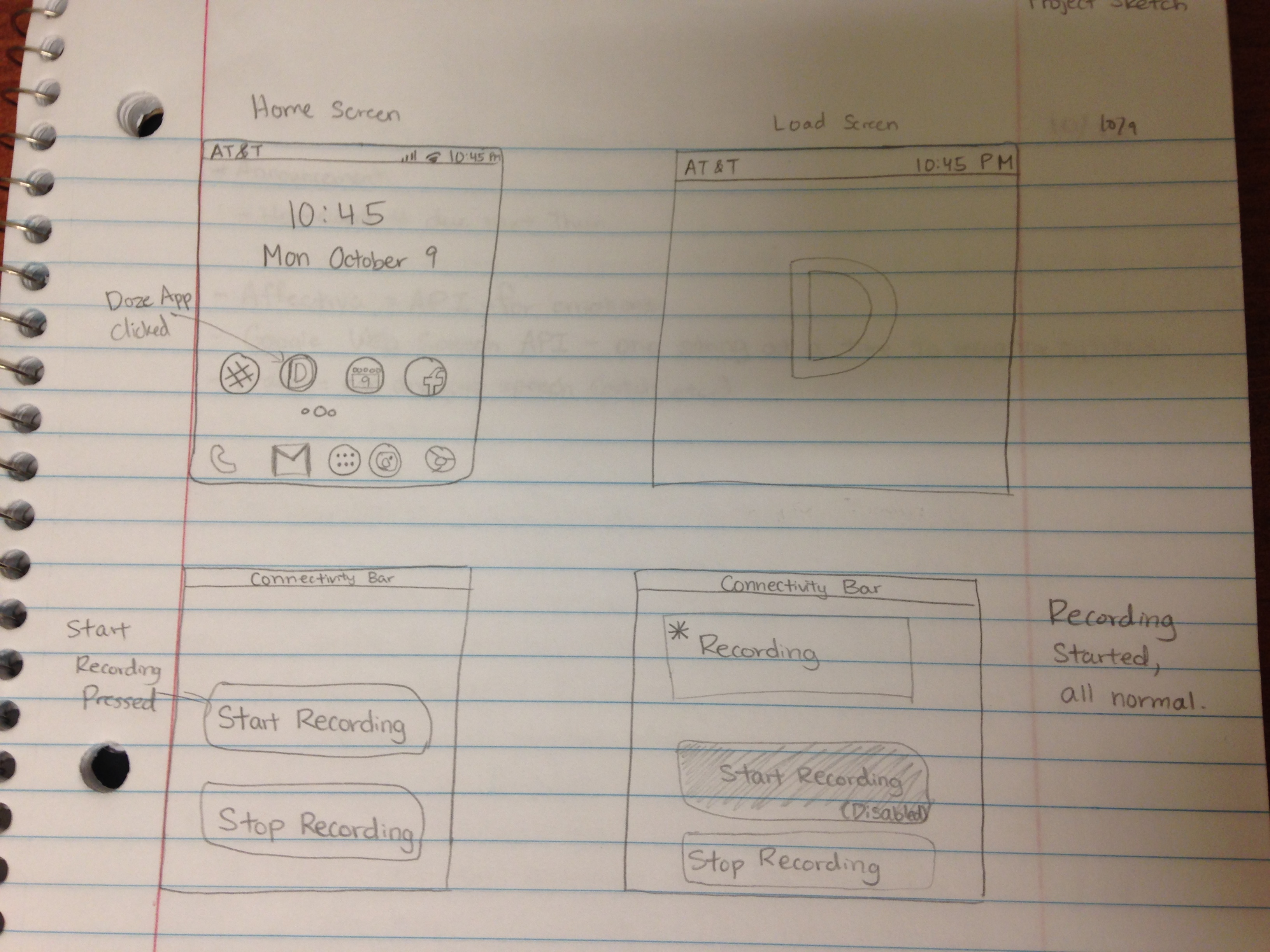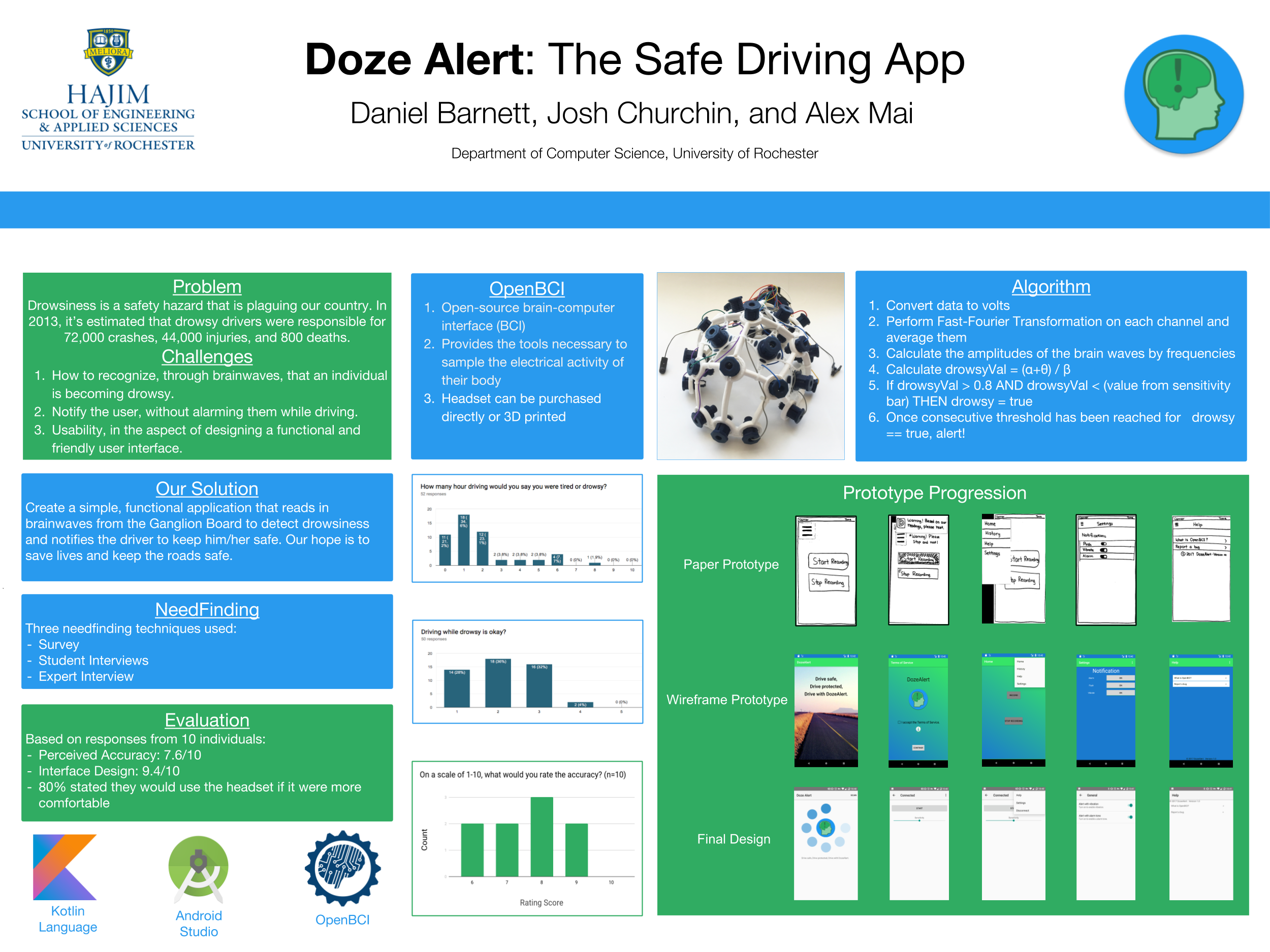Basic Sketch
This was our initial sketch of the application. It showcases the minimal functions of our requirements:
- Have the user launch the application
- Allow the user to start and stop recording
- Display the state of recording and detection result

This was our initial sketch of the application. It showcases the minimal functions of our requirements:

We chose to leverage OpenBCI (Open Source Brain-Computer Interface) to help us obtain our project objective. OpenBCI provides the necessary tools to sample the electrical activity of a person's body. With the design provided by OpenBCI, we 3D printed the headset to save on cost. The following pictures show the evolution of the headset being built.
